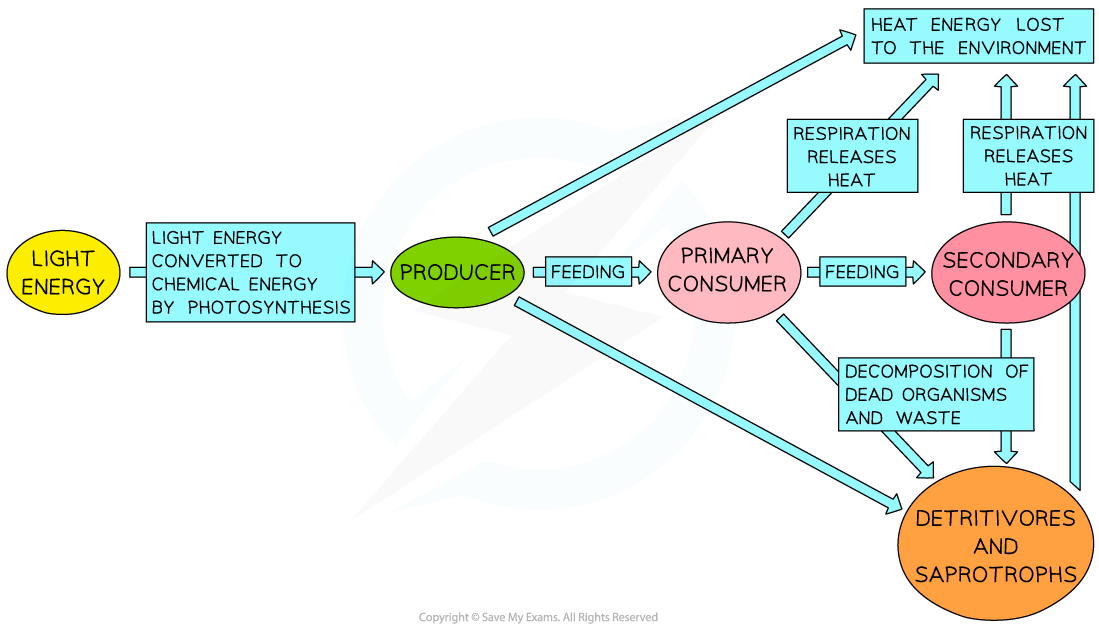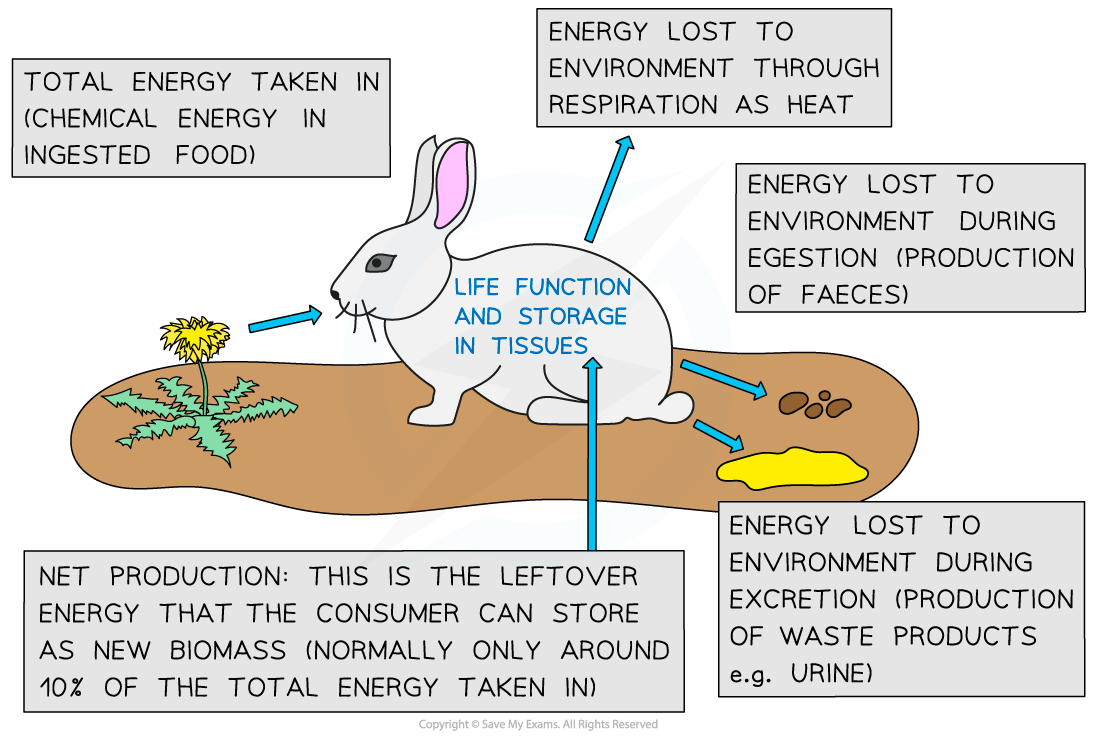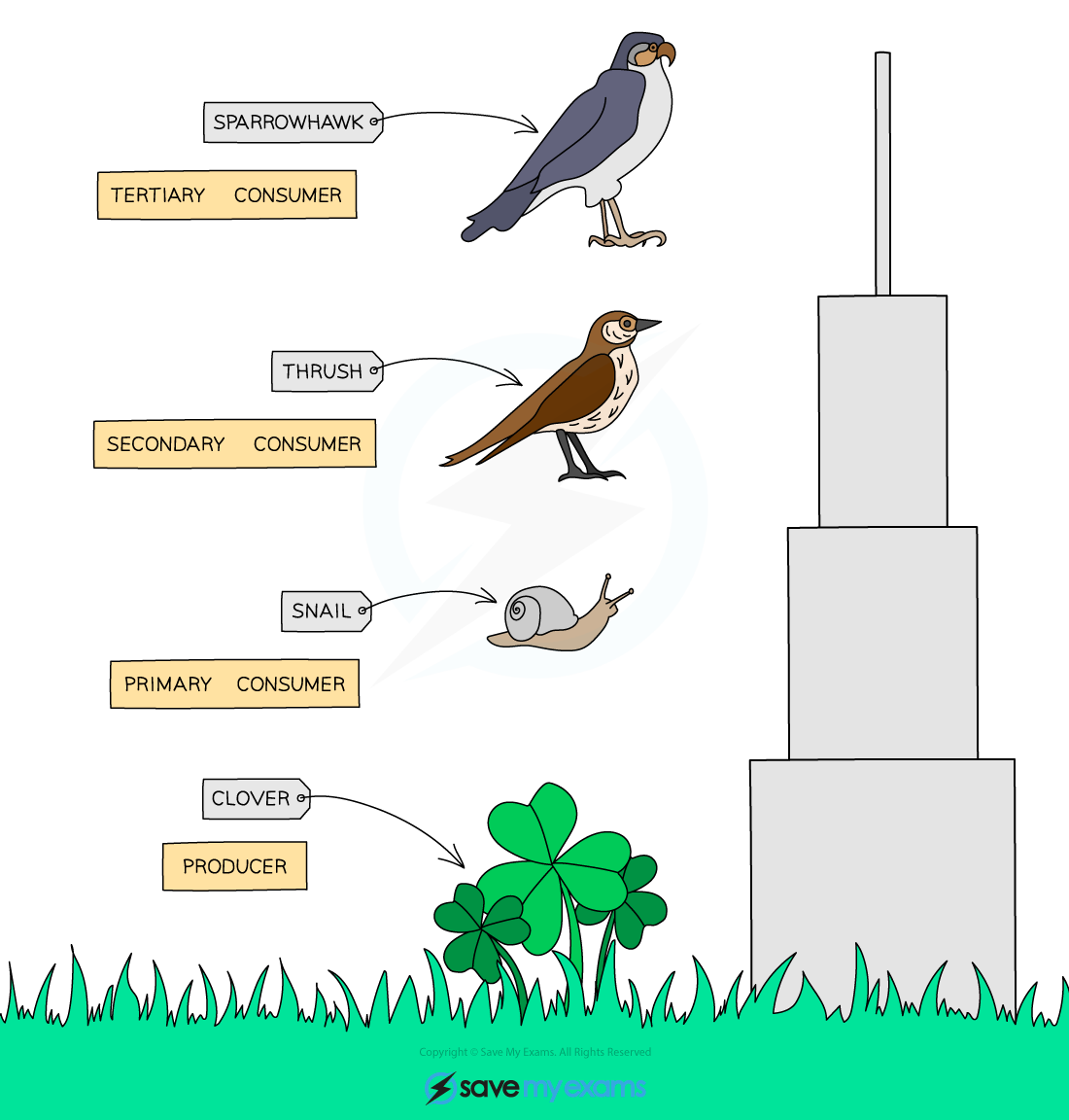Wasted Energy - Heat
- The process of respiration in living organisms releases heat as a by-product
- This applies in producers, consumers, detritivores, and saprotrophs
- This heat energy is lost from ecosystems to the environment at every trophic level, and during decomposition

Heat energy released during respiration is lost to the environment at every stage of the food chain
Energy Losses between Trophic Levels
- When a consumer ingests another organism not all the chemical energy in the consumer’s food is transferred to the consumer's tissues
- Only around 10% of the energy is available to the consumer to store in their tissues
- This is because around 90% of the energy is lost to the environment
- Around 90% of the energy is lost to the environment because
- Not every part of the food organism is eaten, e.g. the roots and woody parts of plants or the bones of animals, meaning that the chemical energy these uneaten tissues contain is lost to the environment
- Consumers are not able to digest all of the food they ingest, e.g. cellulose in plants, or the fur of animals, so some is egested as faeces; the chemical energy in this undigested food is also lost to the environment
- Energy is lost to the environment in the form of heat when consumers respire
- Energy is lost to the environment when organisms excrete the waste products of metabolism e.g. urea in urine
- The energy that is left after these losses is available to the consumer to fuel their life functions, including being stored in carbon compounds in their tissues during growth

Energy is lost from the food chain as heat during respiration, due to incomplete digestion, and through excretion of the waste products of metabolism. Remaining energy fuels the organism’s life processes or is stored in carbon compounds in the tissues.
NOS: Use theories to explain natural phenomena; the concept of energy flow explains the limited length of food chains
- Scientists can gather information about the world by observing events, or phenomena, before formulating theories that seek to explain those events
- In the case of food chains:
- Scientists observe that food chains are short and have a pyramid structure
- Theories of energy flow and energy losses can provide an explanation for these phenomena
- Food chains are limited in length
- Food chains rarely have more than around four or five trophic levels; this is because with energy losses at each trophic level, there is less and less energy available to the consumer as you go up the food chain
- When a food chain gets longer than four or five trophic levels it becomes too difficult for a predator to hunt enough prey to gain the energy to survive
- Biomass decreases with each trophic level
- Because only around 10% of the energy stored in a producer's tissues is available to a primary consumer, primary consumers needs to consume a large amount of plant biomass to gain enough energy to survive
- Again, only around 10% of the energy stored in a primary consumer's tissues is available to a secondary consumer, meaning that secondary consumers need to consume a large amount of prey biomass to gain enough energy to survive
- This leads to a large reduction in biomass at each trophic level and means that when represented in terms of biomass, food chains have a pyramid structure

The biomass at each trophic level of a food chain can be represented as a pyramid of biomass. The pyramid shape results from the energy losses at each trophic level.
Exam Tip
Make sure that you know the different ways that energy can be lost from a food chain and that you can explain the effects that these losses have on food chain structure.Be careful not to mix up pyramids of biomass with pyramids of energy.
